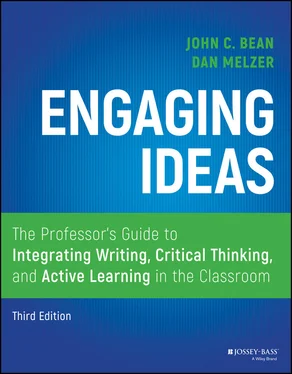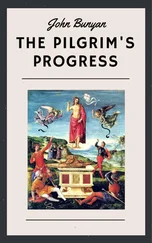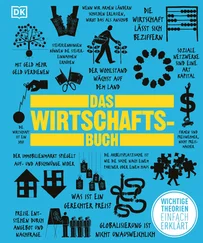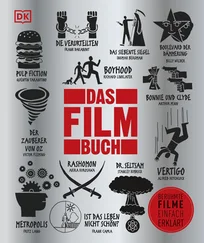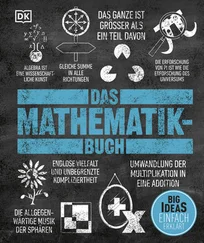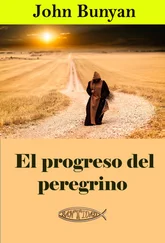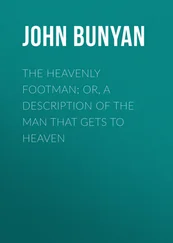10 Hold writing conferences with students, especially for those who are having difficulty with the assignment. Traditionally, teachers in American universities spend more time writing comments on finished products than on holding conferences earlier in the writing process. As a general rule, time spent “correcting” finished products is not as valuable as time spent in conference with students at the rough draft stages. See chapter 13for suggestions.
11 Allow rewrites or make revision‐oriented comments on near final drafts. Many students are motivated toward revision by the hope of an improved grade. If students have an opportunity to revise an essay after you have made your comments, you will strike a major blow for writing as a process. See chapters 12– 15for advice on writing marginal and end comments that encourage revision rather than cosmetic editing. See chapters 11and 16for using self‐assessment, peer reviews, portfolios, and alternative grading methods to promote revision.
12 Bring in examples of your own work in progress so that students can see how you go through the writing process yourself. Students like to know that their teachers also struggle with writing. The more you can show students your own difficulties as a writer, the more you can improve their own self‐images.
13 Recognize how essay exams send wrong signals about writing and revision. Symbolically, essay exams convey the message that writing is a transcription of already clear ideas rather than a means of discovering and making meaning. They suggest that revision is not important and that good writers produce acceptable finished copy in one draft. Although essay exams continue to be a common means of assessment in liberal education, they should not substitute for writing that goes through multiple drafts.
14 Hold to high standards for finished products. Teachers are so used to seeing early drafts as final copy that they often forget how good a globally revised essay can be when teachers demand excellence. Students do not see much point in revision if they can earn As or Bs for their quickly edited first drafts.
15 Consider portfolio assessment or contract grading. Portfolios, almost by definition, ensure significantly revised work. Similarly, teachers using contract grading can build evidence of global revision into the contract requirements. See chapter 16for a full discussion of portfolio assessment and contract grading.
Conclusion: The Implications of Writing as a Means of Thinking in the Undergraduate Curriculum
As this chapter has tried to show, teaching problem‐based analytical and argumentative writing means teaching the thinking processes that underlie academic inquiry. To use writing as a means of thinking, teachers need to make the design of writing assignments a significant part of course preparation and to adopt teaching strategies that give students repeated, active practice at exploring disciplinary questions and problems. Additionally, it is important to emphasize inquiry, question asking, and cognitive dissonance in courses and, whenever possible, to show that scholars in a discipline often disagree about answers to key questions. By teaching a problem‐driven model of the writing process, teachers send a message to the Skylers of the world that good writing is not a pretty package for disguising ignorance. Rather it is a way of discovering, making, and communicating meanings that are significant, interesting, and challenging.
1 *From Miniature Guide to Critical Thinking Concepts and Tools by Richard Paul and Linda Elder, 2009, Dillon Beach, CA: Foundation for Critical Thinking Press, p. 2. www.criticalthinking.org. Used by permission.
3 Helping Writers Think Rhetorically
Some years ago John had the opportunity to participate in a statewide assessment of student writing in upper division courses across the curriculum. Researchers collected several hundred papers written by juniors and seniors from a wide range of disciplines at six public universities. The goal for this first‐stage project was descriptive: determining what kinds of papers students were being asked to write and classifying them by whatever categories seemed to emerge. What John and his fellow researchers discovered as they puzzled over many of the papers was that they should have asked for an assignment sheet to be attached to each paper.
John and his fellow researchers' confusion indicated that students were not thinking rhetorically about their purpose or the needs of their audience. Without the assignments, the researchers struggled to understand what many of the papers were doing. Students tended to write directly to the teacher, whose background knowledge the researchers didn't share. The researchers were plopped down in the middle of a conversation to which they hadn't been introduced. As outside readers, they needed papers with effective titles that identified the subject and promised some new or contestable perspective on the subject. They also needed introductions that explained the problem to be addressed, filled in needed background, and offered some kind of thesis statement or purpose statement to indicate the writer's intentions and to forecast the argument.
Clearly students across the disciplines were not being coached to transfer into their upper division writing the rhetorical knowledge introduced in first‐year composition. A goal of most first‐year composition programs is to show students how a writer's decisions are often functions of the writer's rhetorical situation—the writer's purpose, audience, and genre. Particularly, expert writers pose the following kinds of questions about their rhetorical context:
Who are my intended readers?
How much do my readers already know and care about my topic? What is their stance toward my topic?
What is my purpose for writing? What kind of change do I want to bring about in my readers' understanding of my topic? When my readers finish my paper, what do I want them to know, believe, or do?
What genre is most appropriate for my context? What are the features and constraints of this genre? What style, level of language, and document design does this genre require?
How is the genre shaped by the values and expectations of the community of readers and writers who make up the audience (the “discourse community”)?
Our goal in this chapter and the next is to suggest ways that disciplinary instructors can help students practice these rhetorical skills when they write papers in any field. In chapter 3, we introduce the concept of “rhetorical situation,” which includes “purpose,” “audience,” “genre,” and “discourse community.” In chapter 4we expand on these concepts and provide ideas for designing formal assignments set within authentic rhetorical situations. Scholarship has shown that helping students situate their writing within a rhetorical context helps them transfer knowledge from one writing situation to another (Anson and Moore, 2017; Beaufort, 2007; Carroll, 2002; Carter, 2007). When students learn to wrestle with questions about purpose, audience, genre, and discourse community, they develop a conceptual view of writing that has lifelong usefulness in any communicative context.
Helping Students Think about Audience and Purpose
An important difference between novice and expert writers is that experts think about audience early in the writing process whereas novices don't (see Sommers's classic study, 1980). Closely related to audience is the concept of purpose. One way to think about purpose is through the writer's aim—such as to inform, explain, analyze, persuade, reflect, entertain, and so forth. But another useful way to understand purpose is to articulate the kind of change the writer hopes to bring about in the readers' view of the topic. Instructors can help students understand purpose in this way by having them do the following nutshell exercise while planning their papers:
Читать дальше
